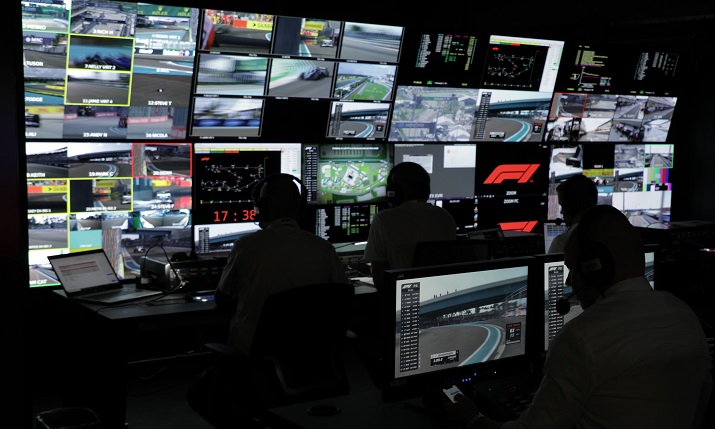F1 2024: IP upgrades and the “almighty challenge” of a record-breaking F1 calendar

With a record-breaking 24 races in the 2024 calendar, this year’s Formula 1 championship is set to be the biggest yet. Formula 1 director of broadcast and media Dean Locke spoke with SVG Europe ahead of the season opener in Bahrain last weekend, and explained how he and his team have been preparing for the bumper season which begins long before any driver or constructor points are up for grabs.
“Testing is a full event – we’ve just been on air last week for three days, each eight hours long – so it’s really 24 races plus one, which is an almighty challenge. But we’ve set ourselves up well; if we’d done this years ago, I think we would have found it very difficult. But we’ve set ourselves up very well logistically and by being cuter with some of our geographical calendar changes.”
“We’ve had conversations with broadcast partners and one-stop technical solutions that work for everybody and help to reduce the number of people and kit on site and makes everything more reliable is something we’re going to develop this year.”
This year, Formula 1 has made efforts to adopt greater calendar regionalisation, with the aim of simplifying the logistics involved in racing in locations around the world and in a bid to make the season more sustainable.
“Also, the remote operation that we’ve got at the Media and Technology Centre means we don’t have to move so much kit and people between races,” says Locke. “We’re able to rotate crew so that some at the Media and Technology Centre and some people on the road, which gives us flexibility we wouldn’t have had a few of years ago.”
Between the end of the 2022 season and the start of 2023, there were major upgrades to the F1 Media and Technology Centre at Biggin Hill, which is some 20-miles southeast of London with the building converted to a remote centre. During the past few months, those upgrades have continued with enhancements to connectivity and distribution paths, plus a new replay system – all of which is part of four-year transition to IP.
“Whether that’s working with Tata on some of our connectivity paths and redundancies around that, or satellite provision because we have multiple paths – we have significant connectivity from the track to Biggin Hill and then distribution from Biggin Hill to broadcast partners and the likes of AWS and IT partners and our own platforms – so there have been upgrades to all of that, and it’s also part of the IP transition.”
Read more F1 2024: Explaining the action with more kid-friendly broadcasts and a boost to team radio
Locke explains that his team is “right in the middle” of that four-year transition. “A lot of routing and gateways, a large selection of traditional SDI feeds are now gatewayed and routed are now IP, and now we have an IP-based replay system. We’re also looking at things like vision mixers and cameras, but that will be the next stage. So, there was a lot of work but not as much as last year when we built a brand-new remote operation.”
And the enhancements aren’t limited to the technical setup, with a better work environment for Biggin Hill-based staff also part of the overhaul to make the facility “fit for purpose”.
“We have a really good restaurant, social areas, much better offices, and the actual work environment is so much better; our first stab at remote when people are wearing ski jackets at three o’clock in the morning and looking at the bright sunshine in Melbourne was disheartening. But now, it is a really comfortable place to work. And the fact that we’ve just done three, eight-hour days and people were still smiling is great.”
A “one-stop shop: Supporting Formula 1 rights holders
Locke says there is a keenness from some Formula 1 broadcasters for the centralized provision of technical solutions. He explains:
“We shouldn’t all be doing our own thing. We’ve had conversations with some broadcast partners and they are very into that. So one-stop technical solutions that work for everybody and help to reduce the number of people and kit on site and makes everything more reliable is something we’re going to develop this year.”
This could potentially include things such as RF kit, camera equipment, connectivity, also data that might not be included in the world feed with efforts to avoid working on the same piece of analysis or graphical representation.
Read more F1 2024: Capturing the action with drones, new camera angles and AI

